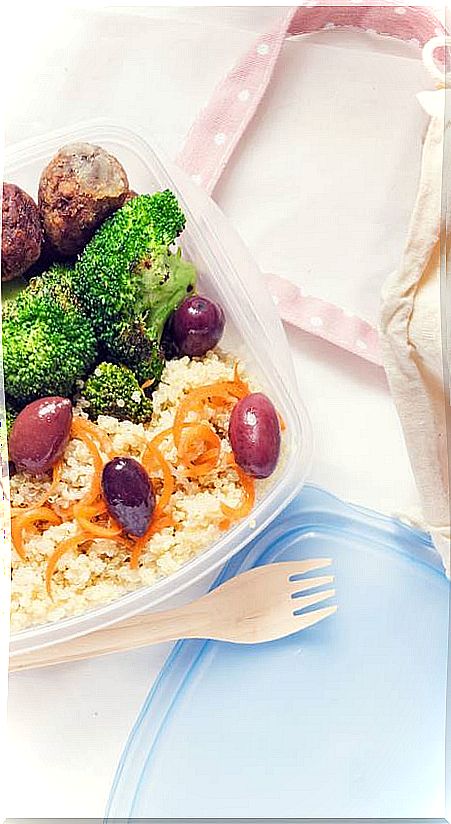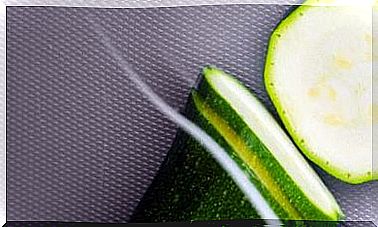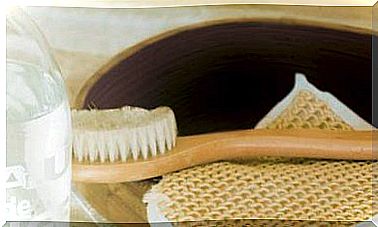4 Tricks To Prepare Healthy And Delicious Tuppers
Neither restaurant food, nor precooked. With food prepared at home and some added ingredients you can create surprising taper recipes

When we have to eat out, which is quite common with the working hours we have, we can choose to go to a restaurant (not very economical and in many cases unhealthy), throw out fast food and precooked (unhealthy and not very economical) Or take the container with homemade food.
Many times people ask me for ideas and recipes “to eat from a container” because they don’t know what to do or what to take. You want very tasty recipes, which can be heated later and for which we do not have to invest too much time at home.
The 4 keys to preparing healthy and delicious tapers
Over the years I have been inventing the most curious tppers and take-out food, fed up with the pasta pan and the hot salad, so I will give you a few ideas to banish the image of the sad tper forever.
Ideas that do not fail
There are foods that withstand temperature changes and reheating very well. For example, steamed potatoes (with skin), stews and stews with little broth, steamed, grilled or roasted vegetables, sautéed legumes, lasagna and moussakas, vegetable patés, etc.
Some vegetables do not even need previous cooking, you can put them as is, raw, in the container to complement your food, and heat it later or leave them raw. For example, some broccoli or cauliflower florets.
The good thing about this idea is that you can save what is left over from meals at home for the container, which does not have to be for the next day. Lasagna, for example, keeps very well in portions, and once in the container you can add some fresh, roasted or cooked vegetables, a handful of already cooked cereals (for example, brown rice or millet), a handful of fruits dried (walnuts, almonds, pumpkin seeds …), a few tablespoons of vegetable pate (hummus for example, which is the easiest), etc.
Choose containers of various sizes and one that closes hermetically, so you can take home vegetable creams and preparations with broth, such as stews and stews
A well-stocked lunch box
When I have to make takeout I think about what I have in the fridge and what I can prepare in a moment if necessary. In general, I always put vegetables, some cereal, legumes and nuts. For instance:
- Roasted vegetables + garam masala lentils + walnut millet.
- Hummus with whole wheat bread + grilled broccoli + cherry tomatoes with pumpkin seeds (and dressing on the side).
- Pasta with chickpeas + tomato sauce (aside) + rice with coconut and almonds.
- Potato salad with apple and tofu + vegan sauce (aside) + cauliflower with peanuts.
And where did I get all this from?
One day I bought a lot of vegetables with the intention of roasting them (3 leeks, 8 peppers, 4 aubergines, 4 tomatoes, 3 zucchini, 2 onions…). Once done, I peeled them and saved them for other dishes.
Another day I made garam masala lentils and kept a container with what was left over. The same with the millet, which I did to accompany an aubergine curry (if there was any leftover, I could have made another container with it).
The hummus is done in 5 minutes, so having cooked chickpeas doesn’t worry me. 😉
I love coconut rice: when I prepare it, I try to make more than that for other days.
Another good thing about introducing variety in our lunch box is that when you open it it will not seem that you are going to eat “the ranch”, but something varied, colorful and appetizing. Play with colors, flavors and textures.
The clingy food is over
One of the mistakes we make most frequently is to put any type of food in the container and hope that the next day and after reheating it it will have the same wonderful appearance, the same texture and the same flavor.
Rice and pasta tend to continue absorbing liquids if we leave them in broths and sauces. After, of course, a “pegotón” is made. To avoid this, put the pasta or rice on one side and the sauce on the other. You can use a small container and put it inside the big one with the pasta or rice. Luckily, now they sell a multitude of sizes and with the smallest we can carry sauces, dressings, spices, etc.
- So that the paste does not stick, add a little olive oil (1 tablespoon) and stir it very well. Do not put it in the container until it is cold.
- In the case of couscous and dry pasta, you can put them as is, but always letting them cool first and separating the grains with a fork before reheating.
- To carry rice it is better to choose those that are loose but not dry. They also serve us preparations such as sautéed rice, paellas, pilaf, etc.
- Stews with dense broths can also end up sticking, but it is usually more due to the cold and some dehydration. The solution is easy: before reheating, add a pinch of water and stir well.
Salads and fruits aside
- If you are going to take a hot and a cold container, do not take them together. My advice is that both are cold, you will heat what you want.
- Always carry salads in a separate container, and the dressing in a small jar or container.
- Also take the fruit in another container or out of the container. It is not necessary that you cut it at home, you can take the whole piece or choose fruits with edible skin such as apples, pears, plums, strawberries, etc.
- If you have a fridge, keep everything in it until lunchtime. Dress your salad while the other plate heats up and it will be freshly made!









